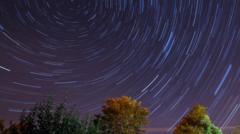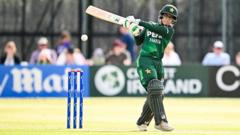When and Where Can You Catch the Perseid Meteor Shower?

Understanding the Perseid Meteor Shower: A Celestial Spectacle
The Perseid meteor shower is one of the most anticipated astronomical events each summer, captivating stargazers with its bright, fast-moving meteors. As we approach its peak, set for a Tuesday night, many are eager to witness the dazzling display. However, visibility might be hindered by the bright moonlight from the recent Sturgeon Moon, which could obscure the fainter meteors. Nonetheless, the Perseids offer a unique opportunity to connect with the cosmos, making it worth the effort to step outside and look up.
What Are Meteor Showers?
Meteor showers occur when Earth passes through trails of dust and debris left behind by comets or asteroids. These particles enter the Earth's atmosphere at high speeds, burning up and creating the bright flashes known as meteors or "shooting stars." The Perseids are specifically linked to the comet Swift-Tuttle, which orbits the Sun approximately every 133 years. As it travels through space, it leaves behind a trail of dust that creates the stunning meteors we see each August.
The History of the Perseids
With nearly 2,000 years of recorded observations, the Perseid meteor shower has a rich history. Some of the earliest records date back to ancient China, where they were noted for their spectacular displays. The name "Perseid" comes from the constellation Perseus, as the meteors appear to radiate from this area of the sky. This connection to mythology and history adds an extra layer of intrigue for those who venture out to watch the shower.
Best Viewing Times and Conditions
While the peak night for the Perseids in 2025 will be on August 12-13, the best viewing times typically occur after midnight, with the most meteors visible just before sunrise. This year's peak, however, coincides with the bright Sturgeon Moon, which reached full phase on August 9 and will still be quite luminous on peak night. According to Finn Burridge, a science communicator at the Royal Observatory Greenwich, this moonlight will significantly affect visibility, making it challenging to see the full 100 meteors per hour that the shower can produce.
Viewing Opportunities Beyond the Peak
For those who may not be able to view the Perseids during the peak, there are still opportunities to catch meteors between August 16 and 26. While meteor activity will be lower during these dates, they provide a chance for clearer skies, as the moon will rise later in the night, reducing its interference with visibility. Burridge recommends these dates, particularly the weekend of August 16 and 17, for a more enjoyable viewing experience.
Tips for Maximizing Your Meteor Shower Experience
To enhance your chances of witnessing shooting stars, consider the following tips:
- Find a Dark Location: Choose a spot away from city lights for optimal viewing.
- Check the Weather: Clear skies are essential for visibility. Make sure to check the forecast for your area.
- Bring Comfortable Seating: A reclining chair or blanket will help you relax and enjoy the show.
- Allow Your Eyes to Adjust: Give your eyes about 20 minutes to adapt to the darkness for better visibility.
- Be Patient: Meteor showers can be sporadic, so allow time to catch the show.
What to Expect This Year
This year’s Perseid meteor shower may present some challenges due to the brightness of the Sturgeon Moon. While some meteors may still be visible, enthusiastic stargazers should temper their expectations. Burridge notes that even under full moon conditions, viewers can still expect to see at least 1 or 2 fireballs per hour, which is better than missing out entirely.
The Science Behind Meteor Showers
The Perseids and other meteor showers are not just beautiful spectacles; they also provide valuable scientific insights. The study of meteor showers helps astronomers better understand the composition of comets and asteroids, as well as the dynamics of our solar system. By tracking the paths of these meteors and analyzing the light they emit, scientists can gain insights into the age and origin of the materials that make up these celestial bodies.
The Nature of Comets and Their Trails
Comets, like Swift-Tuttle, are often referred to as "dirty snowballs," consisting of ice, dust, and rocky material. When they approach the Sun, they heat up, causing gases and dust to be released, which forms a glowing coma and often a tail that stretches millions of kilometers. As Earth travels through the debris left by these comets, the tiny particles create the stunning meteor showers that we enjoy each year.
Why You Shouldn’t Miss Out
Even with the challenges posed by the moonlight, experiencing a meteor shower is a magical event that connects us to the universe. It provides an opportunity to step outside, look up at the vast sky, and be reminded of our place in the cosmos. Whether you're a seasoned astronomer or a casual observer, the thrill of watching shooting stars is something to cherish.
Preparing for the Night
As the date approaches, make sure to prepare adequately for your meteor-watching experience. Check local weather forecasts and plan your viewing location ahead of time. If you're heading out on the peak night, consider packing snacks and drinks to enjoy while you wait for the meteors. The combination of clear skies, good company, and a quiet night can make for an unforgettable evening.
Frequently Asked Questions
What are the Perseids named after?
The Perseids are named after the constellation Perseus, as the meteors appear to radiate from this area in the sky.
When is the best time to view the Perseids?
The best time to see the Perseids is usually after midnight, with the peak activity occurring just before dawn.
How fast do meteors travel during the Perseid shower?
Meteors during the Perseid shower travel at speeds of about 37 miles (59 kilometers) per second when they enter the Earth's atmosphere.
Can I see meteors if there’s a full moon?
While the visibility of meteors can be affected by bright moonlight, it is still possible to see a few meteors, especially the brighter ones, even during a full moon.
What should I bring for meteor watching?
It's best to bring a reclining chair or blanket, snacks, drinks, and a flashlight (preferably with a red filter to preserve night vision) for your meteor-watching experience.
As we prepare for the upcoming Perseid meteor shower, let’s embrace the wonder of the universe and the chance to witness a truly magnificent celestial event. Will you be stepping outside to catch a glimpse of the shooting stars this August? #PerseidMeteorShower #Stargazing #Astronomy
```Published: 2025-08-10 17:45:13 | Category: technology



